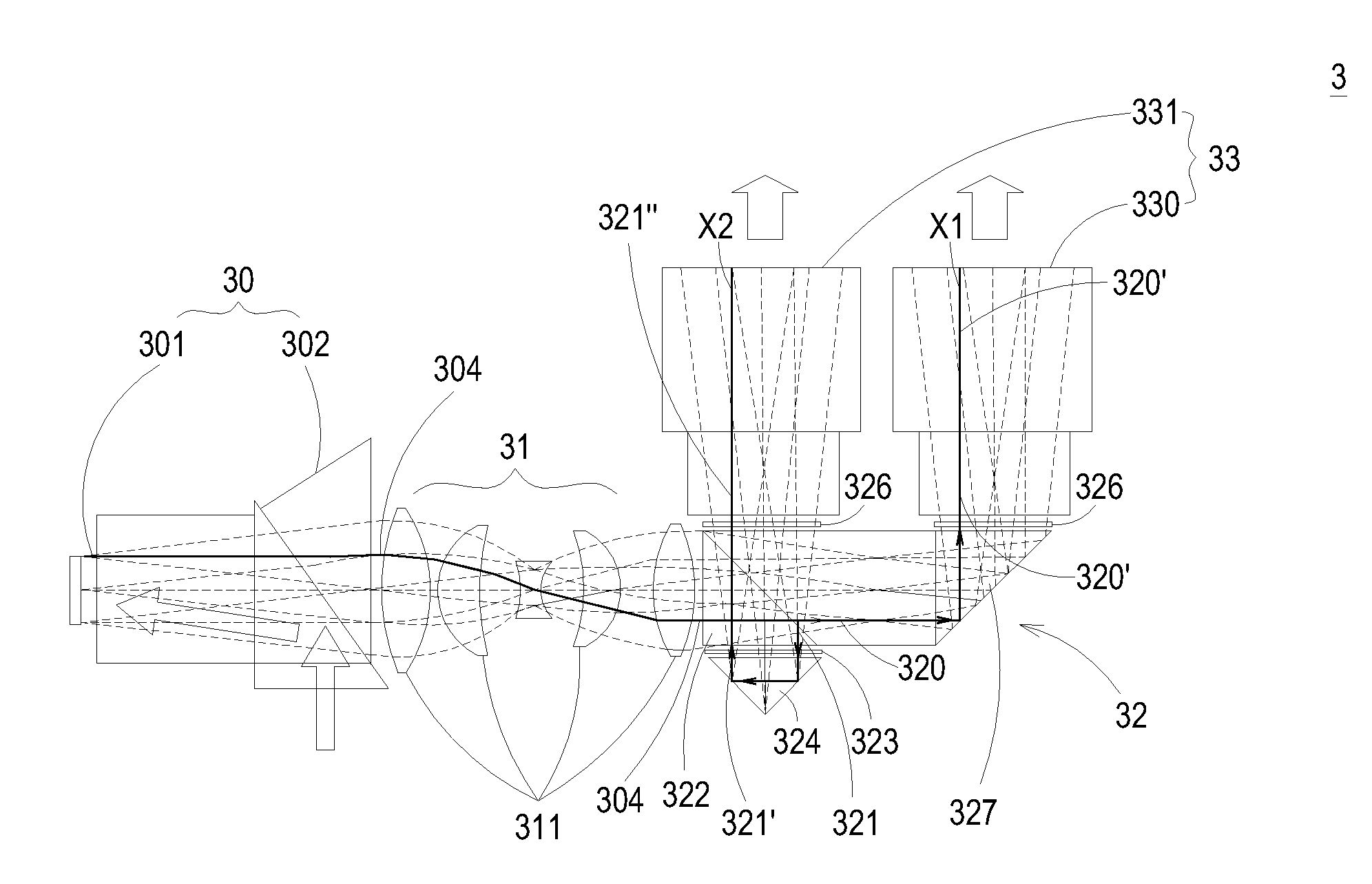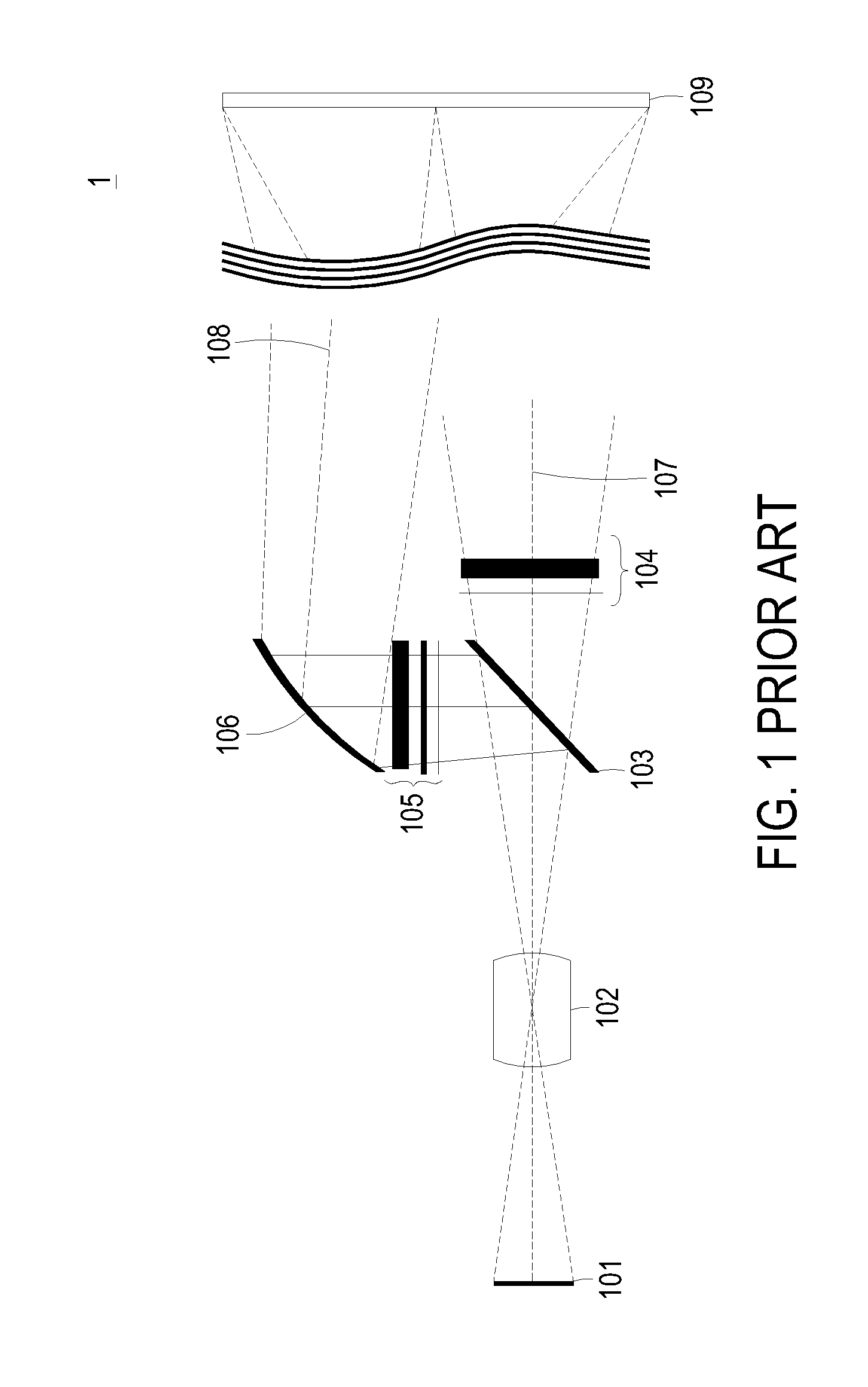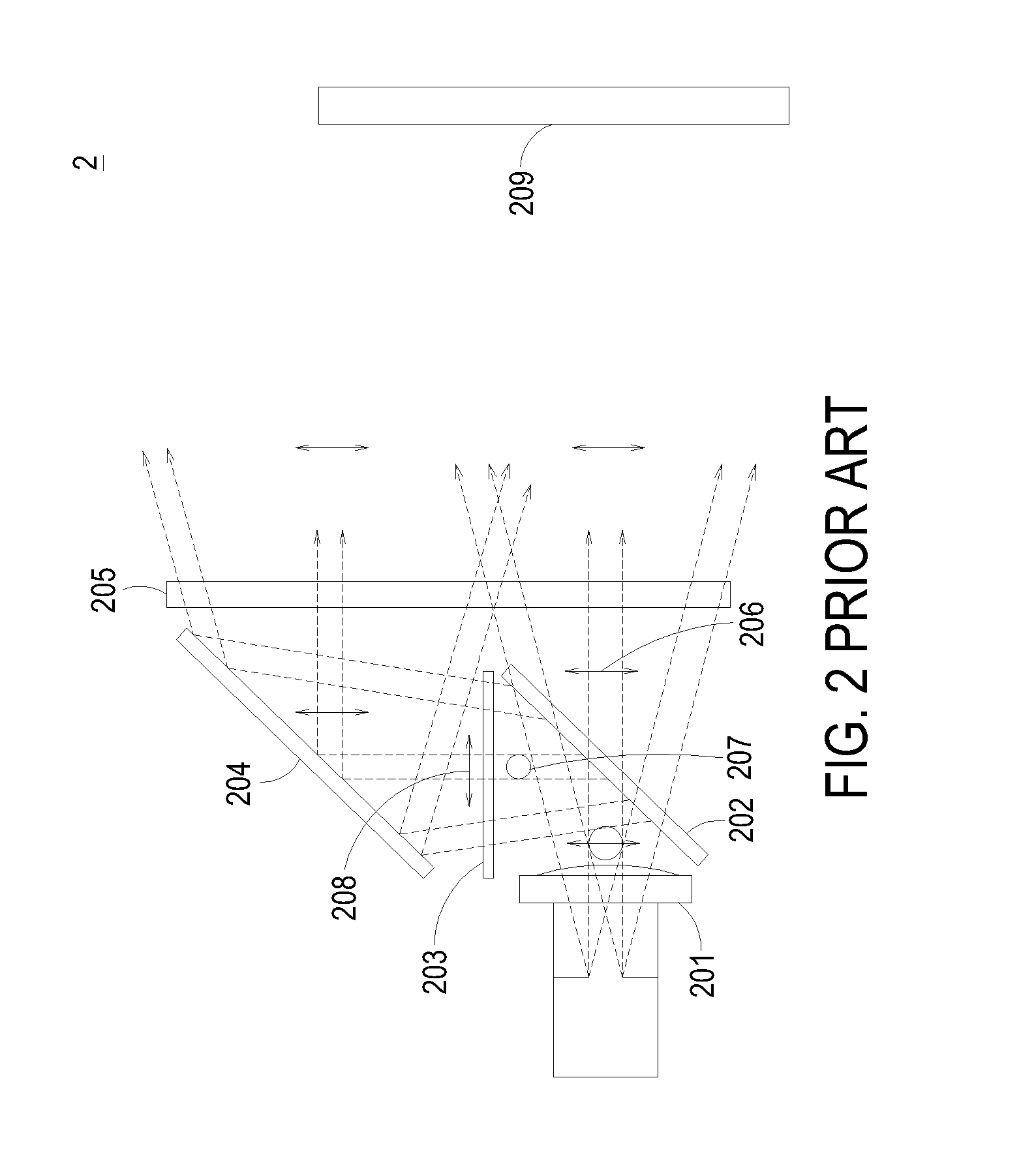Polarization conversion system and stereoscopic projection system employing same
a stereoscopic projection and polarization technology, applied in the field of stereoscopic projection systems, can solve the problems of inconvenient periodic replacement of the battery of the liquid crystal shutter glasses, the bulky and heavy nature of the approach, and the inability to adjust the polarization and polarization parameters, etc., and achieve good imaging quality.
- Summary
- Abstract
- Description
- Claims
- Application Information
AI Technical Summary
Benefits of technology
Problems solved by technology
Method used
Image
Examples
first embodiment
[0022]FIG. 3A schematically illustrates a stereoscopic projection system according to the present invention. As shown in FIG. 3A, the stereoscopic projection system 3 comprises an optical engine 30, a relay lens group 31, a polarization conversion system (PCS) 32 and projection lenses 33. The optical engine 30 comprises a digital micro-mirror device (DMD) 301, a total internal reflection prism (TIR prism) 302 and a Philip prism 303. The optical engine 30 is configured for outputting a non-polarized image light 304. In this embodiment, the digital micro-mirror device 301 is a one-piece or three-piece micro-display.
[0023]FIG. 3B schematically illustrates the relay lens group of the stereoscopic projection system as shown in FIG. 3A. After the non-polarized image light 304 is outputted from the optical engine 30, the optical engine 30 is directed to the relay lens group 31. As shown in FIGS. 3A and 3B, the relay lens group 31 comprises a plurality of lenses 311. In this embodiment, the...
second embodiment
[0029]FIG. 4A schematically illustrates a stereoscopic projection system for a stereoscopic projection system according to the present invention. As shown in FIG. 4A, the polarization beam splitter (PBS) of the polarization conversion system 40 comprises a right-angle prism 41, a PBS coating 42 and a dove prism 45. The PBS coating 42 is coated on the plane between the right-angle prism 41 and the dove prism 45. After a non-polarized image light 400 is directed into the polarization conversion system 40, the non-polarized image light 400 is split into a first polarized beam 401 and a second polarized beam 401 by the PBS coating 42. The first polarized beam 401, which is in a first state, is propagated along a first optical path X1. The second polarized beam 402, which is in a second state, is propagated along a second optical path X2. The first polarized beam 401 is transmitted through the dove prism 45, and then the propagating direction of the first polarized beam 401 is changed by...
third embodiment
[0030]FIG. 4B schematically illustrates a polarization conversion system for a stereoscopic projection system according to the present invention. As shown in FIG. 4B, the polarization beam splitter (PBS) of the polarization conversion system 50 comprises a PBS cube 51, a glass plate 54 and a total reflection prism 55. The PBS cube 51 is composed of two right-angle prisms 501 and 511. Similarly, after a non-polarized image light 500 is directed into the polarization conversion system 50, the non-polarized image light 500 is split into a first polarized beam 501 and a second polarized beam 502 by the PBS cube 51. The first polarized beam 501, which is in a first state, is propagated along a first optical path X1. The second polarized beam 502, which is in a second state, is propagated along a second optical path X2. The first polarized beam 501 is transmitted through the PBS cube 51, the glass plate 54 and the total reflection prism 55. The propagating direction of the first polarized...
PUM
 Login to View More
Login to View More Abstract
Description
Claims
Application Information
 Login to View More
Login to View More - R&D
- Intellectual Property
- Life Sciences
- Materials
- Tech Scout
- Unparalleled Data Quality
- Higher Quality Content
- 60% Fewer Hallucinations
Browse by: Latest US Patents, China's latest patents, Technical Efficacy Thesaurus, Application Domain, Technology Topic, Popular Technical Reports.
© 2025 PatSnap. All rights reserved.Legal|Privacy policy|Modern Slavery Act Transparency Statement|Sitemap|About US| Contact US: help@patsnap.com



